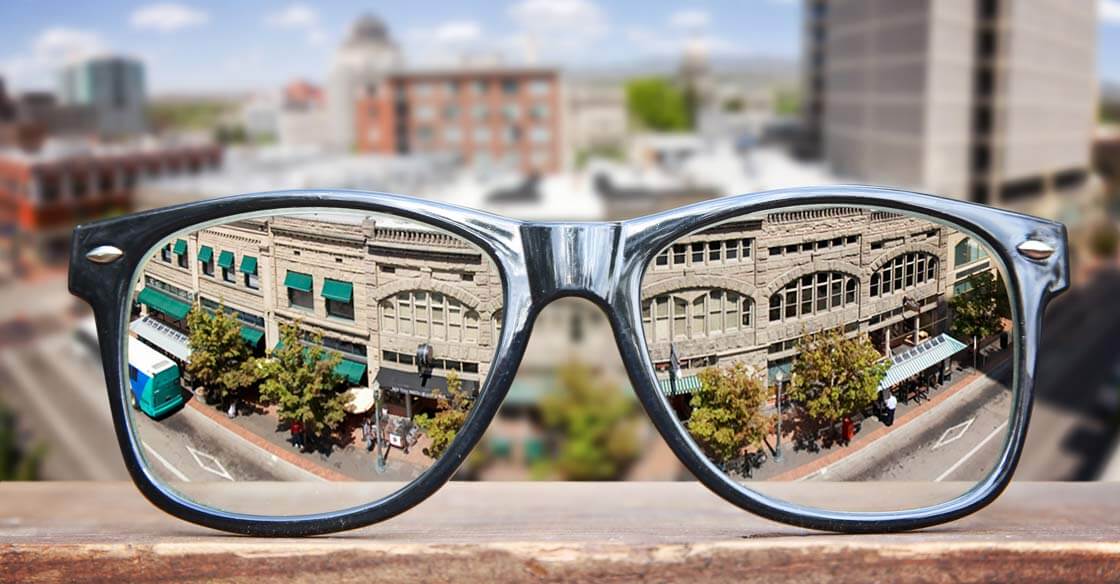Eyeglass Prescription 101: New Glasses and Peripheral Distortion

‘Peripheral’ means on the edge of something or not critical. Hence, we might refer to a minor problem as a peripheral importance. Our computers have loads of peripheral devices. These include inputs and outputs such as keyboards and monitors. Our eyes are our most important input devices. If they start reporting peripheral distortion, we should know why.
Limitations of Peripheral Sight
Some creatures have 360-degree vision. Chameleons can flick from the front to the side to the back in a flash. So can alligators, although not directly behind. While human visual acuity is excellent, our peripheral vision is poor compared to eagles. That’s because our eyes are in sockets, and only able to focus directly ahead.
As we continue to evolve, our receptor cells have concentrated in the center of our retina. We can still sense movement acutely to the left and right, as well as respond. Try it now and notice how your sight ‘greys out’ before it reaches your ears. We call this the extent of the field of vision. An optometrist checks peripheral distortion in an eye test as a test for an early sign of glaucoma.
Peripheral Vision Loss and Perception of Space
The Journal Pub Med of the U.S. National Library of Medicine reported on a study into whether peripheral field loss distorts spatial representations. It established that it does by watching eye movements and gaze patterns. However, it concluded we are able to make positive adaptations. This adaptability is at the heart of this article.
How New Lenses May Cause Peripheral Distortion
Things always feel a little different when we leave the optician with new lenses. There are several reasons for this, reasons that have nothing at all to do with a deep-seated vision problem:
- Our eyesight changes as we grow from children to teens, from teens to adulthood, and from adulthood into senior years.
- A new pair of lenses updates the prescription to the current status of the patient’s eyes. Then they can see reality ‘as it is’ for a while.
- Things, therefore, appear sharper and more clearly defined. We may feel ‘otherworldly’ for a short time. Then we adjust.
A change of spectacle frames can have a similar effect since it alters the position of the lens relative to the eyes. The new design may allow less or more coverage of our face on the periphery. Discuss any concerns with your optometrist before an eye test. Switching from single to bifocal or trifocal lenses can also cause temporary peripheral distortion. This is particularly true when driving, or going down steps with multifocal lenses.
Peripheral Distortion and Prescriptions for New Lenses
There is always a short period while we adapt to new lenses. Your optician will advise on how long this should take. If your initial experience is uncomfortable or lasts for longer than it should, then go back to your optometrist and explain the problem. A simple adjustment of the frames may be all that you need.
